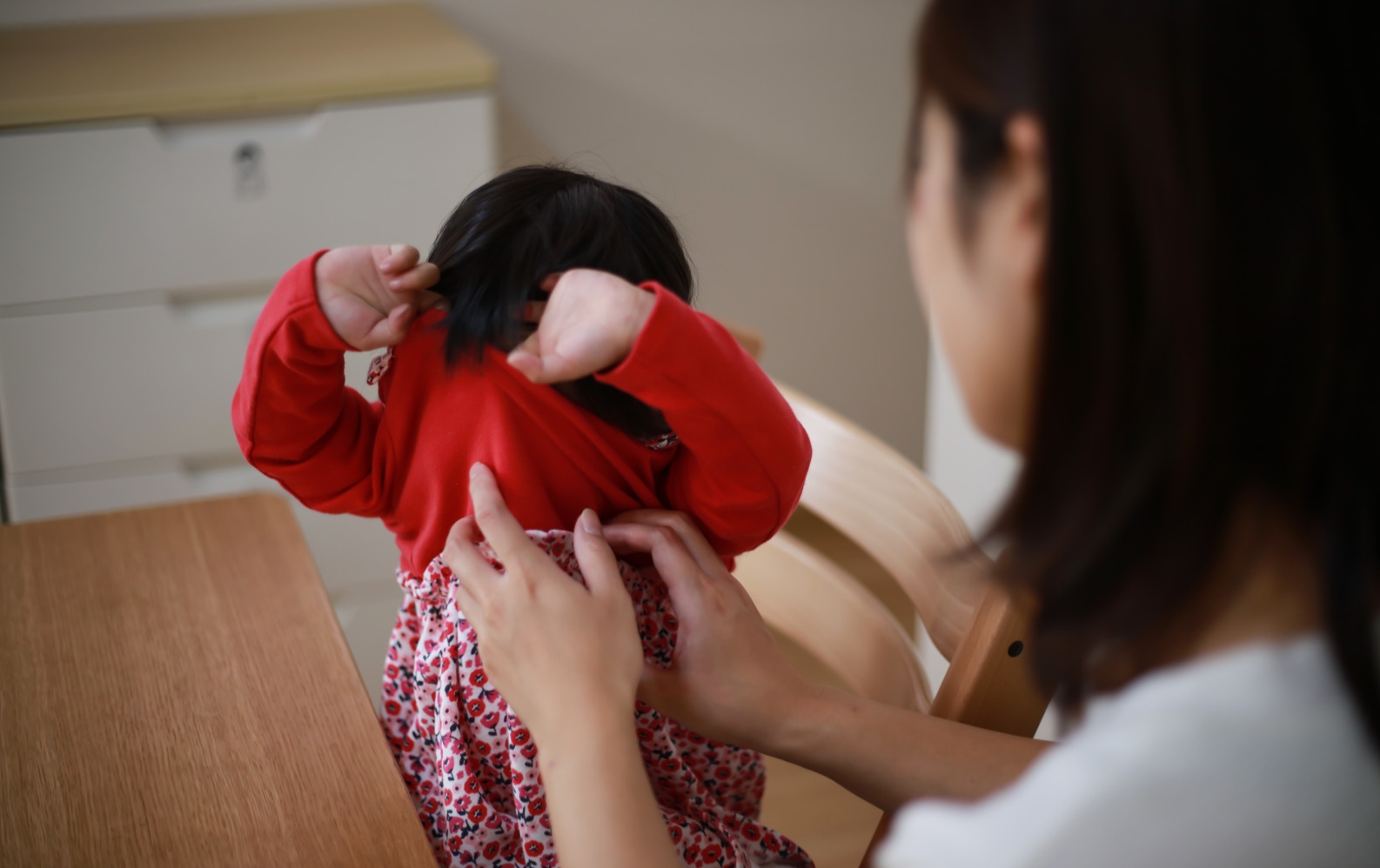Autism spectrum disorder often brings unique challenges that individuals face daily, including behaviors that can be perplexing or concerning for parents and caregivers. One such behavior is the tendency for some autistic individuals to remove their clothing at inappropriate times or places. Understanding the reasons behind this behavior and finding effective strategies to manage it can greatly enhance the well-being and dignity of the individual.

Why Autistic Individuals Tend to Remove their Clothes
Children and adults with autism may remove their clothes for various reasons. Sensory issues, communication difficulties, and behavioral needs often drive this action. Recognizing these underlying causes is crucial to developing appropriate interventions.
Let’s look at each of them in further detail.
Sensory Sensitivities
Many individuals with autism experience heightened sensitivity to certain textures and fabrics. Clothing can feel uncomfortable or even painful against their skin. Tags, seams, or certain materials can cause irritation, prompting them to remove their clothes to seek relief. This discomfort is not something they can easily communicate, especially if they are non-verbal or have limited speech.
Moreover, some individuals may be hypo-sensitive, meaning they seek additional sensory input. Removing clothes might be a way to experience different textures or the sensation of air on their skin, which they find soothing or stimulating.
Communication Difficulties
Communication barriers can also contribute to this behavior. If a child is unable to express discomfort, hunger, need for a bathroom, or any other need verbally or through other means, they might resort to actions like removing their clothes to communicate. For non-verbal children, this might be one of the few ways they can convey that something is wrong or needs attention.
Behavioral and Developmental Factors
Developmental stages and behaviors associated with autism can also influence this behavior. Some children might not understand social norms and the inappropriateness of undressing in public. They may not have developed the self-regulation skills to control impulses or may be seeking attention or a reaction from those around them.

How to Manage the Behavior
Addressing the behavior of removing clothes involves a combination of understanding, patience, and strategic interventions. Here are several approaches to help manage this behavior effectively.
Sensory-Friendly Clothing
One of the most effective ways to manage clothing removal is to address sensory issues directly. Choosing sensory-friendly clothing can make a significant difference. Look for clothes made from soft, seamless fabrics without tags. These garments can reduce the discomfort that often leads to undressing.
Brands specializing in sensory-friendly clothing offer a variety of options designed specifically for individuals with sensory sensitivities.
Additionally, allowing the individual to be involved in selecting their clothes can give them a sense of control and preference, potentially reducing the urge to undress. Offering choices and observing their reactions to different fabrics and styles can provide valuable insights into what they find most comfortable.
Communication Tools
Improving communication is essential for addressing many behaviors associated with autism, including undressing. For non-verbal individuals, augmentative and alternative communication devices can be instrumental. These tools range from picture exchange communication systems (PECS) to speech-generating devices, enabling individuals to express their needs more effectively.
Teaching sign language or using visual aids can also help. Visual schedules and social stories can explain appropriate behavior in different settings, reinforcing the understanding of when and where it’s acceptable to be undressed.
Behavioral Interventions
Behavioral interventions, such as Applied Behavior Analysis, can be highly effective in addressing the issue of undressing. ABA focuses on understanding and modifying behaviors through positive reinforcement.
By rewarding appropriate behavior and providing consistent consequences for inappropriate behavior, individuals can learn to regulate their actions.
Developing a behavior plan tailored to the individual’s needs and triggers is crucial. This plan might include strategies like redirecting attention when the individual begins to undress or teaching alternative behaviors to achieve the same goal (e.g., using words or signs to express discomfort).

Environmental Modifications
Modifying the environment can also help manage undressing behavior. For instance, using clothing that is difficult to remove without assistance, such as one-piece outfits or clothing with back zippers, can prevent spontaneous undressing. Ensuring that the environment is comfortable and free from sensory triggers that might prompt undressing can also be beneficial.
Creating a sensory-friendly space at home where the individual can retreat to when feeling overwhelmed can reduce the need for undressing as a coping mechanism. This space might include sensory toys, weighted blankets, or other calming items that help regulate their sensory input.
Professional Support
Seeking support from professionals who specialize in autism can provide additional strategies and resources. Occupational therapists can help address sensory issues by developing sensory diets and recommending appropriate clothing. Speech therapists can assist with communication skills, while behavior analysts can design and implement effective behavior plans.
Parent and caregiver training is also crucial. Understanding the reasons behind the behavior and learning how to implement strategies consistently can make a significant difference. Support groups and online communities can provide valuable insights and shared experiences from other families facing similar challenges.
Case Studies and Research Insights
Several studies and case reports provide insights into effective management strategies for undressing behavior in autism. For example, a study found that sensory integration therapy, combined with behavioral interventions, significantly reduced inappropriate undressing in children with autism.
The study highlighted the importance of a multi-faceted approach, addressing both sensory needs and behavioral triggers.
Another case study described the successful use of ABA techniques to manage undressing behavior in a young boy with autism. By identifying specific triggers and implementing a tailored behavior plan, the boy’s behavior improved significantly over time.
Addressing Specific Challenges
Managing undressing behavior can present unique challenges in different settings, such as home, school, and public places. Understanding how to address these challenges in each context can enhance the effectiveness of interventions.
Home Environment
At home, parents and caregivers can create a supportive environment by making necessary modifications and implementing consistent routines. Ensuring that the home is a sensory-friendly space can reduce triggers for undressing. Providing sensory toys, creating a quiet area for retreat, and using visual schedules can help.
Involving the child in daily routines, such as choosing their clothes and understanding when it’s appropriate to undress, can also foster a sense of independence and control. Using positive reinforcement for appropriate behavior and gentle redirection for inappropriate behavior can reinforce desired actions.
School Setting
In a school setting, teachers and staff need to be aware of the individual’s sensory sensitivities and communication challenges. Collaboration between parents, teachers, and therapists is crucial to ensure consistency in strategies and interventions.
Creating a sensory-friendly classroom environment, providing sensory breaks, and using visual schedules can help manage undressing behavior. Teachers can also implement social stories and role-playing activities to teach appropriate behavior and social norms.
Public Places
Managing undressing behavior in public places can be particularly challenging. Preparation is key to reducing anxiety and preventing inappropriate behavior. Parents and caregivers can use visual schedules and social stories to explain what to expect in public settings and the importance of keeping clothes on.
Bringing sensory-friendly items, such as fidget toys or weighted vests, can help the individual stay regulated. Choosing comfortable, easy-to-wear clothing that meets sensory needs can also reduce discomfort and the urge to undress.

Long-Term Strategies and Support
Managing undressing behavior in autism requires ongoing effort and adaptation. As the individual grows and develops, their needs and triggers may change, necessitating adjustments in strategies and interventions.
Regular assessment of the individual’s sensory needs, communication skills, and behavioral patterns is essential. Working with professionals to update sensory diets, communication tools, and behavior plans can ensure that interventions remain effective.
Moreover, building a supportive network of family, friends, and community resources can provide valuable assistance. Support groups, online communities, and local autism organizations can offer practical advice, share experiences, and provide emotional support.
Managing the behavior of taking clothes off in individuals with autism involves understanding the underlying causes, addressing sensory and communication needs, and implementing consistent behavioral interventions.
Through patience, understanding, and strategic interventions, it is possible to improve the individual’s comfort, dignity, and quality of life. For specialized ABA therapy in NY, Indiana, New Jersey, Georgia, and Florida, consider contacting Golden Care Therapy. Contact us to schedule a consultation or visit our website to learn more.
Sources:
https://www.verywellhealth.com/stop-your-child-with-autism-from-taking-his-clothes-off-260364
https://www.jigsaw-dx.com/post/how-to-prevent-your-autistic-child-from-taking-their-clothes-off
https://brainwave.watch/autistic-child-taking-their-clothes-off



